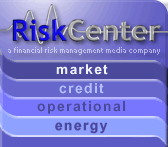More Convincing Evidence That the Economic Recovery is Underway Sets the Stage for Higher Government Yields
Location: Toronto
Author:
Date: Wednesday, January 6, 2010
The run of data over the past few weeks has largely produced upside
surprises relative to market forecasts resulting in a sustained pickup
in equity markets and a relatively sharp rise in government bond yields.
In the US, the data continues to paint a picture of an economy in
recovery mode, albeit still grappling with the effects of the credit
market crisis. The final revision to third quarter real GDP proved
disappointing; however, reports on activity since have shown more vigour
than we previously expected. As a result, we have revised up our fourth
quarter U.S. real GDP forecast to 3.4% at an annualized rate from our
previous forecast of 2.6%. Our 2010 forecast is slightly higher with the
economy expected to grow at a 2.6% pace(from 2.5% previously), although
the continuing repair made to household and business balance sheets will
lead to a more restrained recovery than in past periods. In 2011,
however, this weight will lift and the economy is forecasted to speed up
with RBC forecasting growth of 3.4%.
In the near term, even with the economy in recovery mode, the large
output gap generated during the recession means that significant unused
capacity exists and that labour market conditions will remain weak
throughout most of 2010. We expect the unemployment rate to fall
gradually this year and next. Given this backdrop, inflation pressures
in the US will remain muted in the near term, with the core inflation
rate ending 2010 at 1.0% and rising in 2011 to finish the year at 1.6%.
The headline inflation will be volatile as the effects of movements in
commodity prices produce a near-term rise in the headline inflation rate
which will fade out by year end. In 2011, the headline inflation rate
will average 1.8%.
For fixed income markets, our economic view supports the case for the
Fed to move slowly away from its current level of policy accommodation.
Initially, this will come through the termination of itsnon-traditional
policy measures including the end of the security purchase programs. As
the pace of economic growth accelerates and the low for core inflation
passes, we expect the Fed to take more direct action with the Fed funds
rate expected to end 2010 at 75 bps. This will kick off a year of steady
increases in the funds rate as the economy returns to trend growth, the
unemployment rate recedes and inflation rates start to rise. We have
revised up our forecast for the funds rate at the end of 2011 to 3.25%
from 2.75%. On the fiscal front, the improving economy will lend support
to government finances as tax revenues increase, but debt levels will
remain high. We expect U.S. government bond yields to rise and have
revised up our forecasts with two-year bonds forecasted to end 2010 at
2.25% from our previous 1.85% projection.10-year rates are also
forecasted to end 2010 at a higher level of 4.5% (from 3.75%). Our 2011
forecasts now call for a 4.25%two-year yield and 4.5% 10-year yield at
year end.
The changes to our Canadian forecast are relatively muted as well. Real
GDP growth of 3.4% is expected to be reported for the final quarter of
2009 with a modestly firmer 2.8% expected in 2010 (up from the
previously projected2.6%) and 3.9% in 2011. The sharp rebound in
Canada's housing market and improvement in labour market conditions
suggest that the economy entered 2010 on firm footing with growth
expected to average 3.7% in the first six months of the year, stronger
than our previous forecast of a 3.25% average pace. This stronger growth
profile suggests that the bottom in Canada's core inflation rate will be
higher than we previously forecasted although it will still be in the
lower half of the Bank of Canada's 1% to 3% target band. Similarly, the
peak in the unemployment rate is likely to be lower than in our previous
forecast although with the recovery in Canada somewhat slower than
previous episodes, the decline in the unemployment rate will be gradual
this year and pick up pace in 2011.
This forecast provides little incentive for the Bank of Canada to
deviate from its conditional commitment to hold the policy rate at its
current level until the end of the second quarter of 2010, and we have
made no changes to our call. We expect the Bank to raise the policy rate
by 100 basis points in the second half of 2010 with another 225 basis
points forecasted over 2011 to end the year at 3.5%. In keeping with the
changes to our U.S. forecast, we raised the overall profile for Canadian
yields with the two-year yield forecasted to end 2010 at 2.75% (from
2.6%) and the 10-year rate at 4.25% (from 3.8%). These upward revisions
are more modest than the changes to our U.S. projections. In 2011,with
the policy rate closer to its neutral level, we look for two-year rates
to end the year at 4% with the 10-year yield holding at 4.25%. the
policy rate at its current level until the end of the second quarter of
2010, and we have made no changes to our call. We expect the Bank to
raise the policy rate by 100 basis points in the second half of 2010
with another 225 basis points forecasted over 2011 to end the year at
3.5%. In keeping with the changes to our U.S. forecast, we raised the
overall profile for Canadian yields with the two-year yield forecasted
to end 2010 at 2.75% (from 2.6%) and the 10-year rate at 4.25% (from
3.8%). These upward revisions are more modest than the changes to our
U.S. projections. In 2011,with the policy rate closer to its neutral
level, we look for two-year rates to end the year at 4% with the 10-year
yield holding at 4.25%.

To subscribe or visit go to: http://www.riskcenter.com